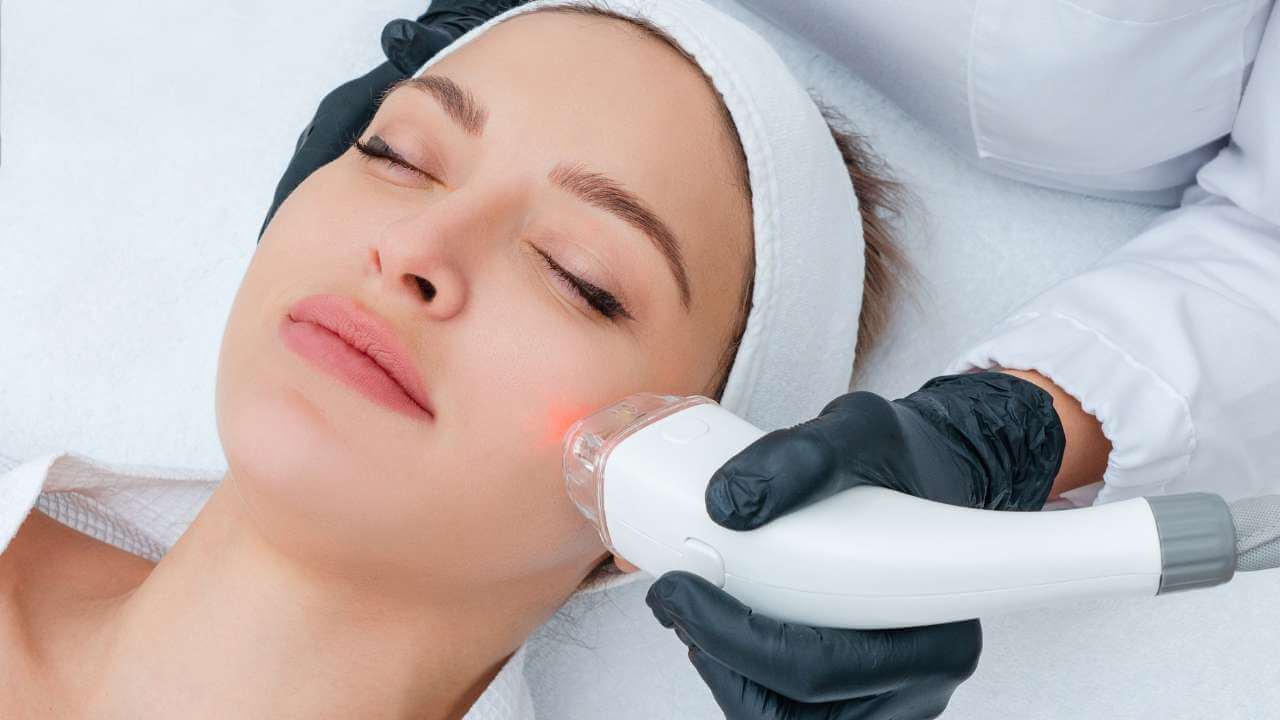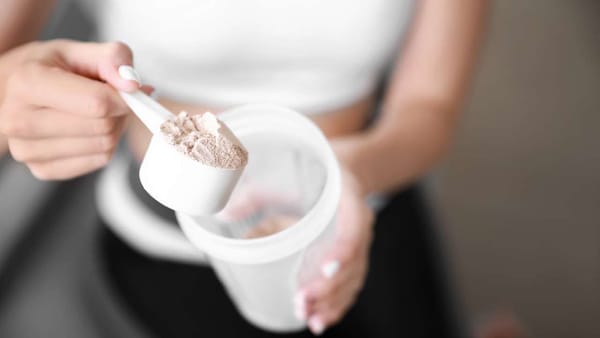Causes & Types | Role of Melanin | Contributing Factors | Treatments | Prevention | Natural Remedies | How Long it Takes to Fade | When to Consult a Dermatologist | FAQs | The Final Mention
Ever looked in the mirror and noticed uneven patches of skin color? You’re not alone.
Hyperpigmentation, a common skin condition characterized by dark patches or spots, can be a nuisance. But understanding why it happens and how to manage it can be empowering.
Let’s dive into the different types of hyperpigmentation, understand their causes, and explore treatments that can help.
Key Takeaways:
- Hyperpigmentation is caused by a variety of factors such as sun exposure, hormonal changes, and skin injuries.
- There are treatments available for different types of hyperpigmentation including topical treatments, microneedling, and laser therapy.
- Prevention strategies like sunscreen use and natural remedies can help reduce the appearance of dark spots while consulting a dermatologist should be done if your condition worsens or causes concern.
Understanding Hyperpigmentation: Causes and Types
Hyperpigmentation is a result of melanin, the pigment that gives our skin its color, going into overdrive and producing excess amounts in certain areas.[1] But what causes this overproduction? The culprits can be numerous – from excessive sun exposure to inflammation to hormonal fluctuations.
But what’s interesting is that hyperpigmentation can manifest in three main types: sunspots, post-inflammatory hyperpigmentation (PIH), and melasma.
Sunspots (Solar Lentigines)
Think of sun spots as the skin’s memoirs of long summer days and beach vacations. Also known as solar lentigines or liver spots, these dark patches typically appear on the face due to excessive sun exposure.[2] They’re common in older folks, who have had more years under the sun, but anyone can get sunspots on their face if they’re out in the sun without adequate protection.
That’s why wearing broad-spectrum sunscreen and protective clothing is absolutely essential when you’re out in the sun.
Post-Inflammatory Hyperpigmentation (PIH)
Post-Inflammatory Hyperpigmentation (PIH) is like the skin’s reaction to an insult or injury.[3] It occurs when inflammation or skin injury leads to darker skin pigmentation in the affected areas. It’s particularly common in those with darker skin tones.
Pigmentation disorders can take a while to disappear naturally - months or even years. But with the right care and treatment, post-inflammatory hyperpigmentation can be managed effectively, helping the skin to return to its normal, even tone.
Melasma
Unlike sun spots and PIH, Melasma hyperpigmentation has more to do with hormonal changes than sun exposure.[4] So what is Melasma? It is often seen as patchy brown areas on the face and is usually triggered by hormonal changes typically during pregnancy, although chronic sun exposure and genetic factors are also contributing factors. It appears more often on the cheeks, forehead, upper lip, and chin.
So, the next time you notice a mysterious patch of brown on your face, it could be your hormones trying to tell you something!
The Role of Melanin in Skin Pigmentation
Melanin, the pigment responsible for our skin color, protects us from the harmful effects of the sun’s ultraviolet rays. However, when melanin production goes into overdrive, it results in hyperpigmentation, leading to darker patches on the skin.
Factors that can contribute to the overproduction of melanin include:
- Sun exposure
- Hormonal changes
- Certain medications
- Skin injuries
While melanin is our skin’s natural sunscreen, too much sun exposure can lead to problems like hyperpigmentation.
Factors Contributing to Hyperpigmentation
While the sun is the most common culprit behind hyperpigmentation, it’s not the only one. Hormonal fluctuations, inflammation, and certain medications can also stir up melanin production, leading to hyperpigmentation. For instance, hormonal changes during pregnancy can lead to melasma, while skin injuries and inflammation can result in PIH.
Even some topical treatments and medications, such as oral contraceptives and chemotherapy drugs, can lead to hyperpigmentation. So, it’s not just about avoiding the sun, but also maintaining hormonal balance and skin health to prevent hyperpigmentation.

Treatment Options for Different Hyperpigmentation Types
While the thought of uneven skin can be troubling, an array of treatment options are available for different types of hyperpigmentation.[5] This includes:
- Topical treatments
- Microneedling
- Microdermabrasion
- Chemical peels
- Laser therapy
What’s important to note here is that the type of hyperpigmentation can affect the treatment options. For instance, while sun spots may respond well to laser treatments, PIH might require a different approach.
Topical Treatments
Topical treatments, often the first line of defense against hyperpigmentation, include medicated creams, lotions, skin-lightening soap, and body washes for hyperpigmentation with ingredients that disrupt the melanin production process. For instance, hydroquinone, often considered the “gold standard” for treating hyperpigmentation, stops the formation of too much melanin, helping to reduce hyperpigmentation from sunspots, PIH, and melasma.
Other topical treatments include tretinoin, which helps reduce hyperpigmentation by increasing skin cell turnover and promoting the replacement of old skin cells.
In addition to these treatments, the use of kojic acid on the skin can be a highly effective method for reducing the appearance of hyperpigmentation, as it disrupts the production of melanin and lightens darkened skin.
Microneedling
Microneedling is a minimally invasive procedure that uses tiny needles to create punctures in the skin. While it may sound scary, it’s designed to stimulate the body’s healing process, which can help reduce hyperpigmentation.
The procedure is safe, and effective, and can be used to target a variety of skin issues, including hyperpigmentation.
Microdermabrasion
Microdermabrasion is a non-invasive exfoliation technique that can help reduce the appearance of hyperpigmentation. The process involves:
- Using a handheld device with an abrasive surface to gently exfoliate the skin
- It’s a simple, straightforward procedure
- Can show improvement after the first treatment
Microdermabrasion is a great option for those looking to reduce uneven pigmentation and improve the appearance of healthy skin.
Chemical Peels
Chemical peels are a type of exfoliation treatment that involves the application of a chemical solution to the skin. The strength of the chemical peel depends on the severity of hyperpigmentation, with deeper spots requiring a higher concentration.
It’s an effective treatment option that can help remove the top layer of skin and reduce hyperpigmentation.
Laser Therapy
Laser treatment, also known as laser therapy, is another effective treatment for hyperpigmentation. It uses targeted light energy to break down melanin deposits, helping to reduce the appearance of hyperpigmentation.
There are various types of lasers available, such as Q-switched lasers, fractional lasers, and intense pulsed light (IPL) lasers.

Prevention Strategies for Hyperpigmentation
Prevention, as they say, is better than cure. This principle holds true even for hyperpigmentation. The best strategy to prevent hyperpigmentation is sun protection. This includes using broad-spectrum sunscreen, wearing protective clothing, and limiting sun exposure.
Proper skincare, including keeping the skin well moisturized, can also help prevent skin inflammation - a common trigger for hyperpigmentation and contribute to maintaining healthy skin.
Natural Remedies for Hyperpigmentation
For those who prefer a natural approach to skincare, several remedies can improve hyperpigmentation. These include:
- Vitamin C
- Aloe vera
- Turmeric
- Nutmeg
- Rice water
While there haven’t been many large-scale studies done on humans to confirm their effectiveness, these skin care essentials are popular choices for those seeking a natural approach to healthier skin.
Using natural ingredients can be a great way to fade dark spots and treat hyperpigmentation without using chemicals.
Vitamin C
Vitamin C is a powerful antioxidant that can help reduce hyperpigmentation by inhibiting melanin production. This vitamin is found abundantly in:
- Citrus fruits
- Bell peppers
- Strawberries
- Tomatoes
- Cruciferous vegetables
It is a key ingredient in many skincare products for its skin-brightening properties. Adding to its numerous benefits, vitamin C hyperpigmentation treatments have proven effective in not only reducing dark spots and age spots but also in enhancing the overall brightness and evenness of the skin, making it a must-have ingredient in your skincare regimen.
Aloe Vera
Renowned for its healing properties, aloe vera contains aloesin, which may help lighten hyperpigmentation by reducing melanin production. While it’s a common ingredient in many skincare products, aloe vera gel can also be used directly from the plant for a natural at-home treatment.
Applying aloe vera gel directly to the skin can help reduce the appearance of dark spots.
Turmeric
In the realm of skincare, hyperpigmentation turmeric treatments harness the anti-inflammatory properties of curcumin, the active ingredient in turmeric, to effectively reduce skin discoloration and improve skin tone. To reap these benefits, you can incorporate turmeric into your daily skincare regimen through products like serums or masks, which will gradually diminish hyperpigmentation and enhance overall skin radiance.
Nutmeg
Nutmeg is a remarkable ingredient to treat hyperpigmentation, thanks to its antioxidant and anti-inflammatory properties that aid in reducing skin discoloration. The benefits of nutmeg on skin include its ability to exfoliate dead skin cells, regulate melanin production, and improve overall skin tone, making it an effective natural remedy for hyperpigmentation.
Rice Water
Rice water, a staple in many traditional beauty routines, is rich in antioxidants. It can help lighten hyperpigmentation and give your skin a brighter tone. Plus, it can reduce inflammation, which can help fade dark spots
Using rice water for skin discoloration as part of your beauty routine can help you achieve a brighter, more even complexion.
How Long Does it Take for Hyperpigmentation to Go Away
Patience is a virtue when it comes to dealing with hyperpigmentation. So how long does it take for hyperpigmentation to go away? Depending on the severity and the type of hyperpigmentation, it can take a few months or even years to fade. But don’t lose hope. With the right treatment plan, the process can be accelerated, helping you to achieve a balanced complexion.
When to Consult a Dermatologist
While there are many at-home treatments available for hyperpigmentation, it’s essential to consult a dermatologist if your condition worsens, changes, or causes concern. A dermatologist can help determine the underlying cause of your hyperpigmentation, advise you on the most effective treatment options, and monitor your progress.
Remember, every skin is unique, and what works for one person may not work for another.
Frequently Asked Questions
Q: What are the three types of hyperpigmentation?
The three main types of hyperpigmentation are age spots, melasma, and post-inflammatory trauma, which can be caused by injury, sun exposure, or a skin condition.
These conditions can cause dark patches on the skin, which can be difficult to treat. There are a variety of treatments available, including topical creams, laser treatments, and chemical peels. It is important to consult a dermatologist to determine the best treatment.
Q: What are the different types of pigmentation on the face?
Common types of facial pigmentation include freckles, solar lentigines, melasma, post-inflammatory hyperpigmentation (PIH), vitiligo, albinism, and peri-orbital hyperpigmentation (POH).
Q: What causes hyperpigmentation?
Hyperpigmentation is commonly caused by increased melanin production, which can be due to sun exposure, hormone imbalances, age, or skin conditions.
These factors can lead to dark spots, patches, or an overall darkening of the skin. Treatment options vary depending on the cause and severity of the hyperpigmentation.
Q: What natural remedies can help with hyperpigmentation?
To reduce hyperpigmentation, try vitamin C, aloe vera, turmeric, nutmeg, or rice water.
These natural ingredients can help lighten dark spots and even out skin tone. They are also gentle on the skin and can be used in combination with other treatments.
The Final Mention
Hyperpigmentation, while common, can be a source of concern. Understanding the different types of hyperpigmentation and their causes can help you choose the right prevention strategies and treatment options.
While natural remedies and over-the-counter treatments can provide relief for some, consulting a dermatologist can offer more targeted treatment options for stubborn cases. Here’s to loving your skin, in all its shades and tones!
✅ 5 Sources
HealthMention only uses sources from authoritative and reliable resources, such as peer-reviewed studies, to strengthen the accuracy of our content.
- Thawabteh, A. M., Jibreen, A., Karaman, D., Thawabteh, A., & Karaman, R. (2023). Skin Pigmentation Types, Causes and Treatment-A Review. Molecules (Basel, Switzerland), 28(12), 4839. https://doi.org/10.3390/molecules28124839
- Choi, W., Yin, L., Smuda, C., Batzer, J., Hearing, V. J., & Kolbe, L. (2017). Molecular and histological characterization of age spots. Experimental dermatology, 26(3), 242–248. https://doi.org/10.1111/exd.13203
- Davis, E. C., & Callender, V. D. (2010). Postinflammatory hyperpigmentation: a review of the epidemiology, clinical features, and treatment options in skin of color. The Journal of clinical and aesthetic dermatology, 3(7), 20–31.
- Situm, M., Kolić, M., Bolanca, Z., Ljubicić, I., & Misanović, B. (2011). Melasma--updated treatments. Collegium antropologicum, 35 Suppl 2, 315–318.
- Thawabteh, A. M., Jibreen, A., Karaman, D., Thawabteh, A., & Karaman, R. (2023). Skin Pigmentation Types, Causes and Treatment-A Review. Molecules (Basel, Switzerland), 28(12), 4839. https://doi.org/10.3390/molecules28124839









